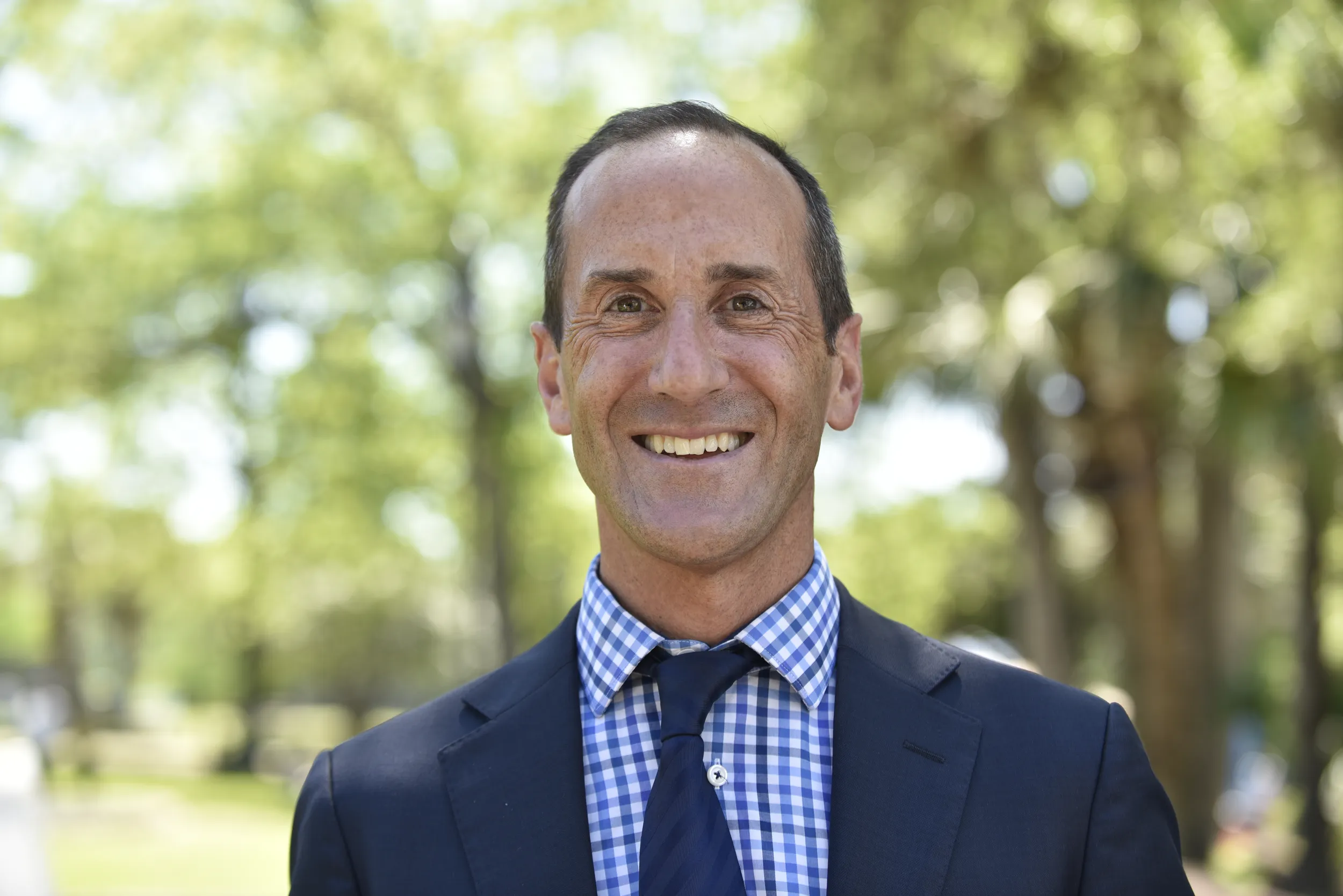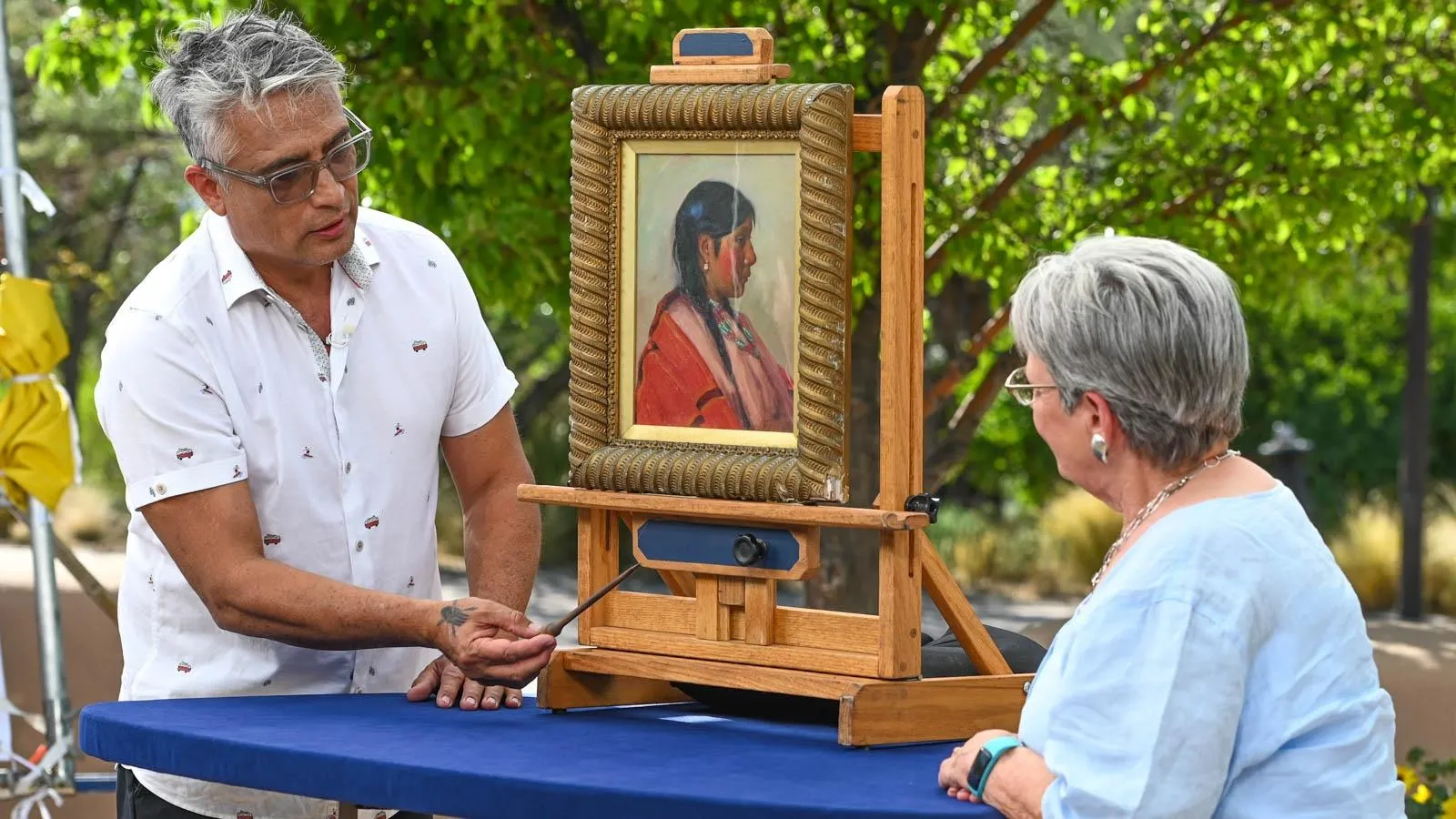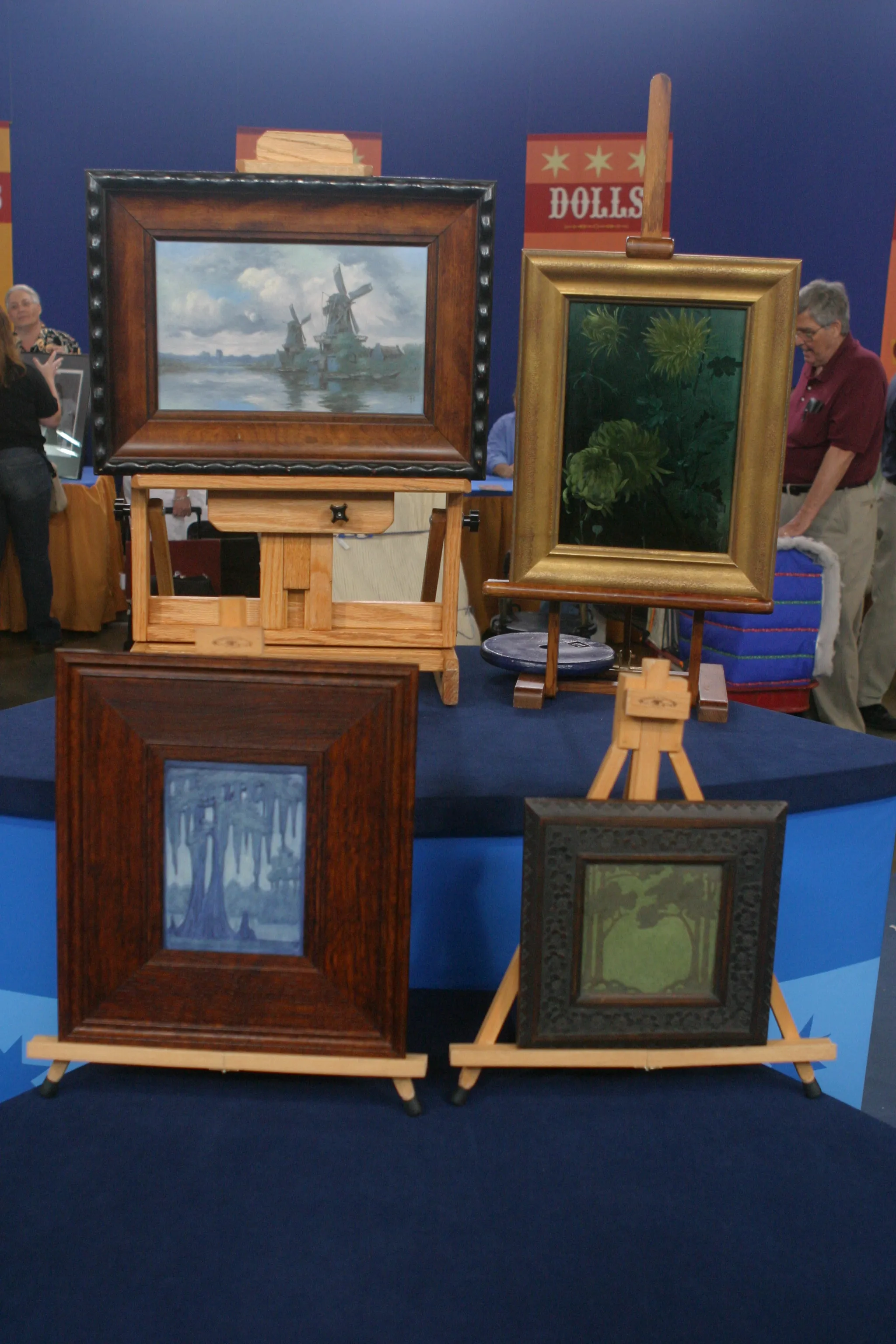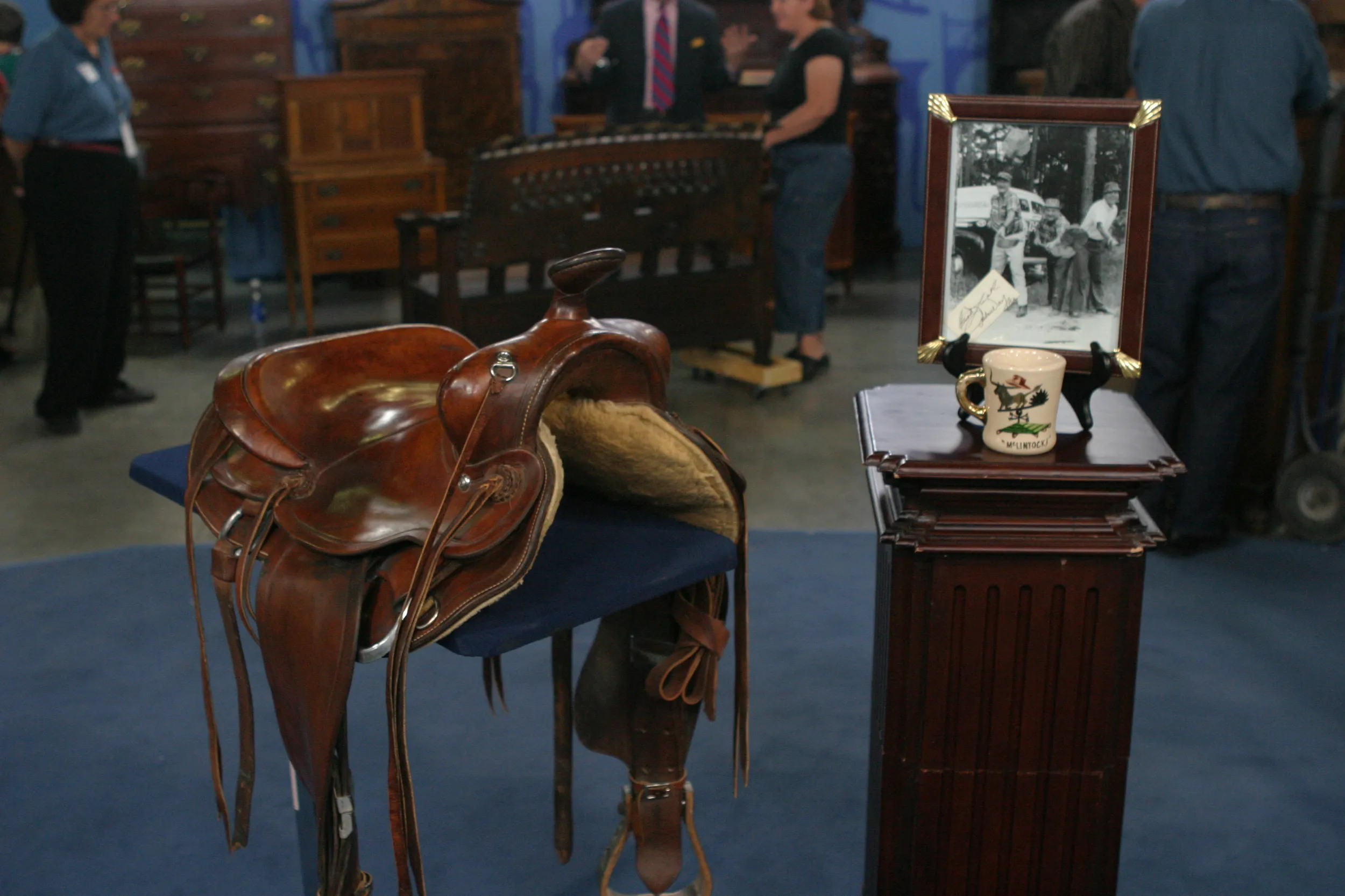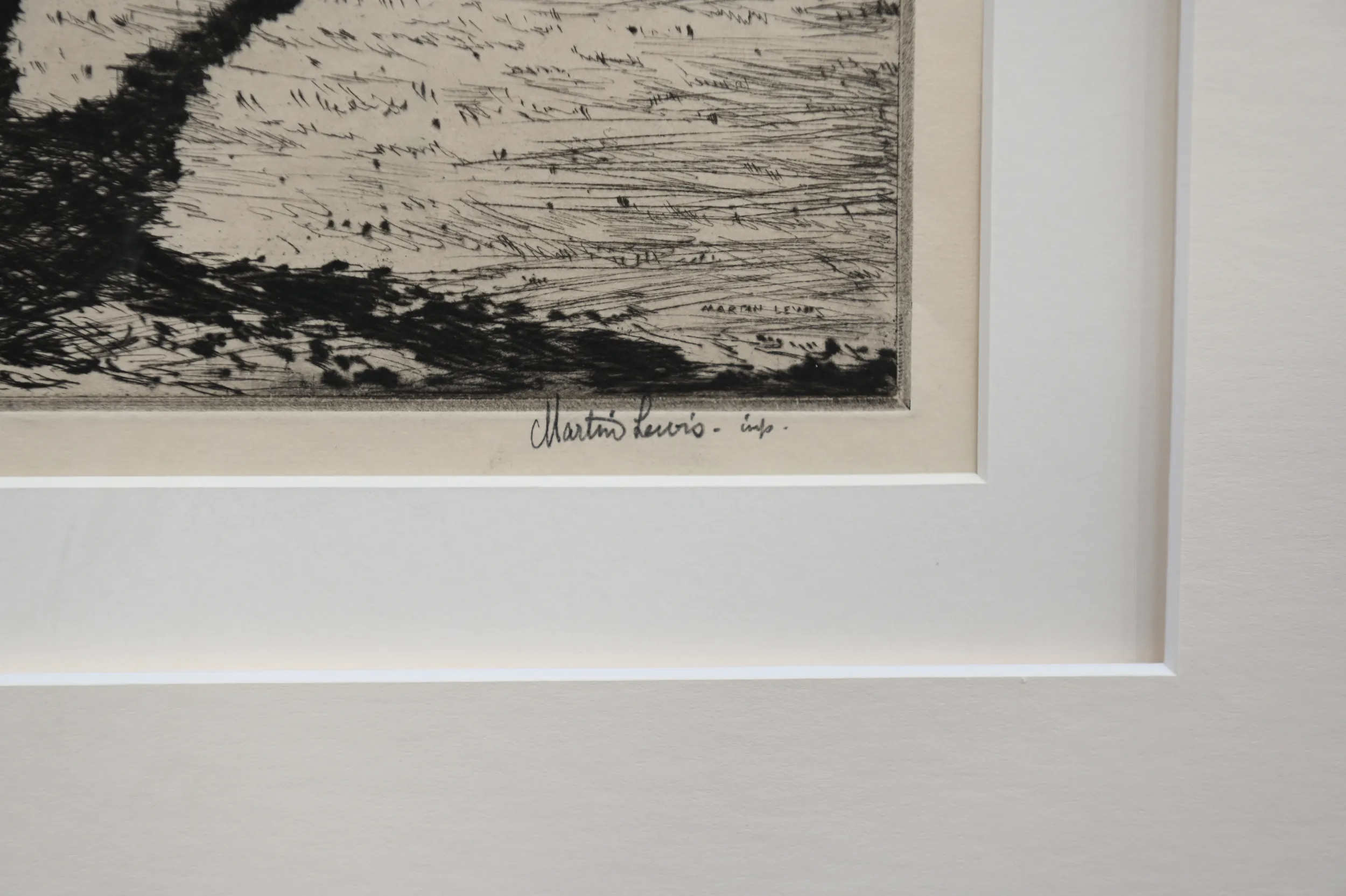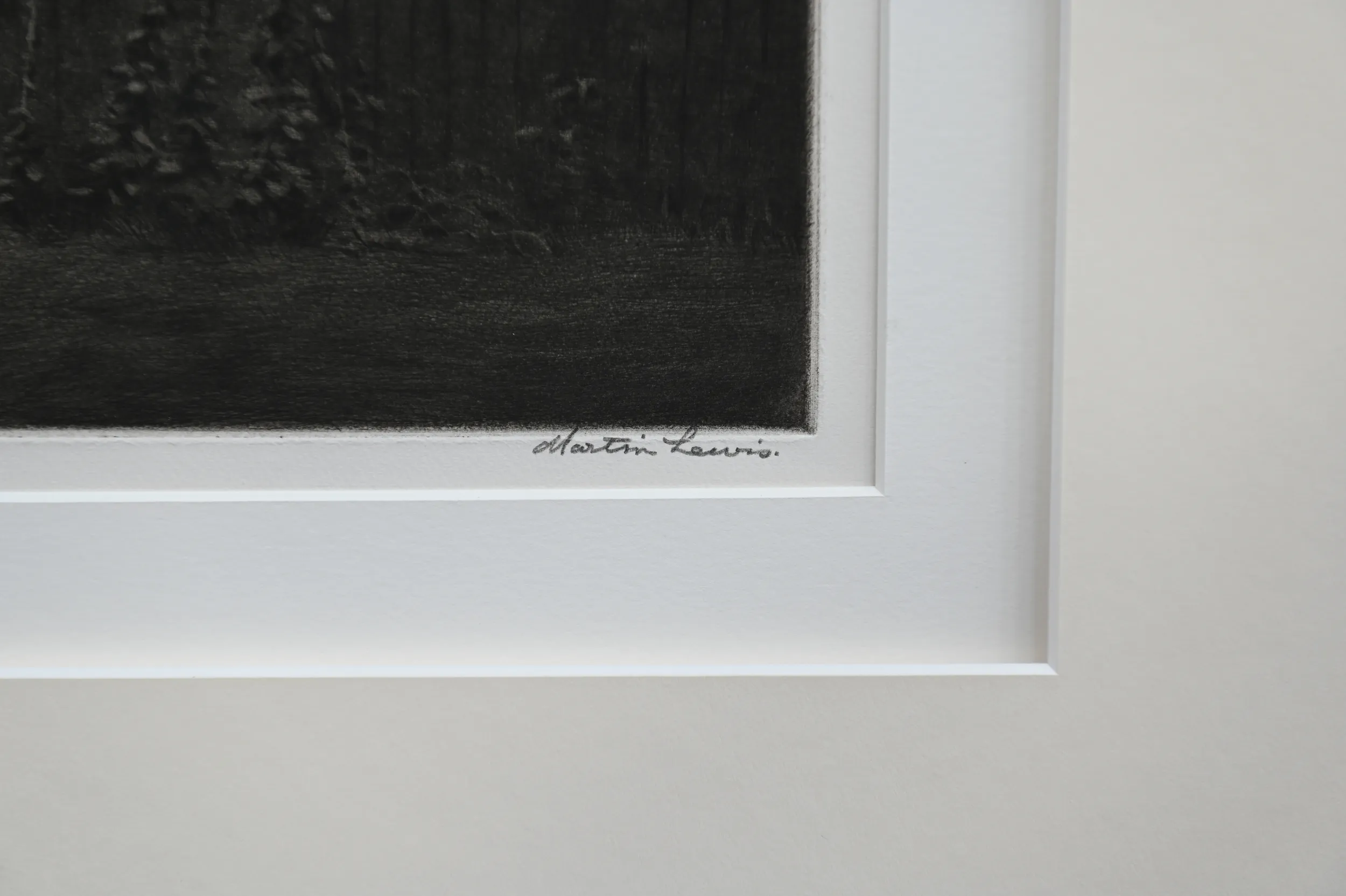GUEST: I first became familiar with Martin Lewis, the artist, probably 15 years ago. I went to an exhibit of prints at the Bruce Museum in Greenwich, Connecticut, and there was a whole line of these. I went to the spring print sales in New York in 2014, and here they were on the wall for sale. And I recognized the farmers over here. And I think he was good friends with Norman Rockwell. And I'm pretty sure that this is a portrait of a young Rockwell and his wife and baby at their garden. This was a lot of two that sold for about $6,000.
APPRAISER: Martin Lewis, the artist, he was Au, Australian-born, and he came over to the U.S. in the early 1900s. Finally settled in New York, and like so many of his peers, he found work as a commercial illustrator in order to make ends meet. And it wasn't until the 1920s or so that he was successfully selling prints and could leave the world of commercial illustration. He was friends with many other New York illustrators at the time. He taught Edward Hopper to make etchings.
GUEST: Okay.
APPRAISER: In the early 1920s, he'd actually, took a two-year sojourn and went to Japan to hone his skill as an artist and learn different techniques. And he comes back and really gets into etchings. And you have, both of these are etchings. The one closest to you is called "Sunday Garden Inspection." And he did that in 1927, and he only made about 30 impressions of that print. There's no documentation saying that that's Norman Rockwell that I found.
GUEST: Yeah.
APPRAISER: But I agree with you, it does look like him.
GUEST: (chuckles)
APPRAISER: That is a suburban scene probably done on the New Jersey side, near New York. He was doing scenes like this in and around Weehawken, New Jersey, just across the Hudson River. And he's much better known for his dark, gritty New York urban scenes. Those are the, those are the etchings that everybody tends to know about Lewis. In 1932, because the Depression was having such an adverse effect on artists in New York, on the advice of his friend and fellow printmaker Armin Landeck, Lewis moved out of New York to Southern Connecticut in search of a lower cost of living. They worked in Connecticut for several years. And this scene closest to me, called "Politics," from 1936, is actually a scene from Connecticut. It shows the men standing around the barn discussing politics. In both cases, you see Martin Lewis's use of that chiaroscuro, or the play of light and dark, and he's so well-known for that in his prints. It, it raises the dramatic quality of his prints. And both of these etchings show off his skill as a meticulous printmaker. They're both signed by the artist in pencil, lower right. This one closest to me is actually a trial proof. He made 11 trial proofs of this subject. In each of the trial proofs, he would slightly alter the etching. You have the second one of 11. Once the edition was decided by Lewis, only 16 got printed. So extremely scarce.
GUEST: Mm-hmm.
APPRAISER: Now, they're both in great shape. They're in museum-quality mats. The etching closest to you, the "Sunday Garden Inspection," I would put an auction estimate on that at $5,000 to $8,000.
GUEST: Mmm.
APPRAISER: For a replacement value, I would put $10,000 on it.
GUEST: Okay.
APPRAISER: The one nearer me, "Politics," which is the more desirable print, I would estimate an auction estimate at $8,000 to $12,000.
GUEST: Oh, really? Okay.
APPRAISER: An insurance value, I would put a value on that of $20,000.
GUEST: Really? Okay.
APPRAISER: Good $6,000 investment.
GUEST (laughing): Thank you.
